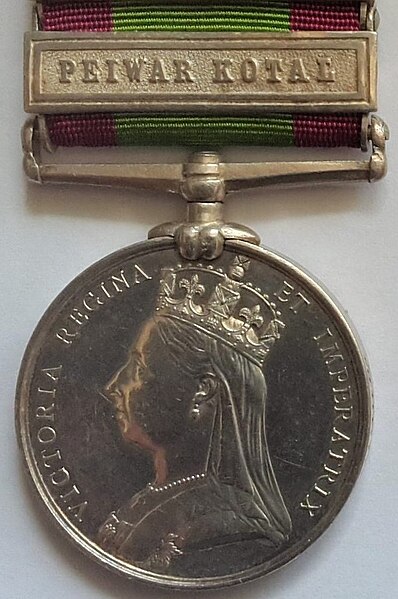The Old Head coinage or Veiled Head coinage were British coins struck and dated between 1893 and 1901, which featured on the obverse a portrait by Thomas Brock of an aged Queen Victoria wearing a diadem partially hidden by a widow's veil. It replaced the Jubilee coinage, struck since 1887, which had been widely criticised both for the portrait of the Queen, and because the reverses of most of the coins did not state their monetary values. Some denominations continued with their old reverse designs, with Benedetto Pistrucci's design for the sovereign extended to the half sovereign. New designs for some of the silver coinage were inaugurated, created either by Brock or by Edward Poynter, and all denominations less than the crown, or five-shilling piece, stated their values.
The Old Head coinage obverse (1893 double sovereign shown)
Gold coin of the Jubilee coinage
The Ashanti or "Ashantee" Medal (1874)
Brock's medal for Victoria's Diamond Jubilee (1897)
The Jubilee coinage or Jubilee head coinage are British coins with an obverse featuring a depiction of Queen Victoria by Joseph Edgar Boehm. The design was placed on the silver and gold circulating coinage beginning in 1887, and on the Maundy coinage beginning in 1888. The depiction of Victoria wearing a crown that was seen as too small was widely mocked, and was replaced in 1893. The series saw the entire issuance of the double florin (1887–1890) and, in 1888, the last issue for circulation of the groat, or fourpence piece, although it was intended for use in British Guiana. No bronze coins were struck with the Jubilee design.
The five-pound piece of the Jubilee coinage, with the Saint George and the Dragon reverse by Benedetto Pistrucci
Boehm's Afghanistan Medal (1881)
Victoria wearing her small diamond crown
Some of the Jubilee coins








